12 Ecommerce Marketing Strategies Worth Your Time and Budget in 2026
With over 2.7 billion people shopping online, standing out takes more than a good product. Find 12 ecommerce marketing strategies, with examples, industry benchmarks, and tips, to help you attract and retain your ideal customers.



Roughly 2.7 billion people shop online, and by 2029, the industry will reach 3.6 billion shoppers.
However, having an online store doesn’t mean that even a small percentage of these 2.7 billion people will just find your store and buy from you. You’ll still need to pull them in, earn their trust, and make it easy for them to say yes to your offer.
In this guide, we will show you 12 ecommerce marketing strategies that can help you do just that, step by step, with examples.
Key takeaways
- User-generated content delivers massive ROI. GoPure made $200,000 and achieved 204x ROI simply by adding customer videos to their product pages.
- With acquisition costs ranging from $21-$377 per customer, your post-purchase experience and retention strategies often matter more than getting new customers through the door.
- Data shows most shoppers are fine with 1–2 retargeting touches a week. Anything more than that and you’ll risk losing them.
Use shoppable user-generated content (UGC)
Have you ever noticed something about the most viral videos?
They’re usually of questionable quality, shot on a mobile phone by a usually random person. Somehow, they still blow up because they are funny, entertaining, or relatable.
That’s the same effect you get from UGC videos.
When you use UGC videos to market your ecommerce products, you're building trust, adding social proof, and making your brand feel more like a next-door neighbor than a faceless corporation.
A great example of an ecommerce business using this strategy is goPure.
After placing shoppable UGC videos on their product pages, they saw an uptick in engagement, made over $200,000 in revenue, and their conversion rate from video viewers hit 13%, with a return on investment (ROI) of 204x.
According to a case study, these shoppable UGC videos resulted in 1,705 orders.
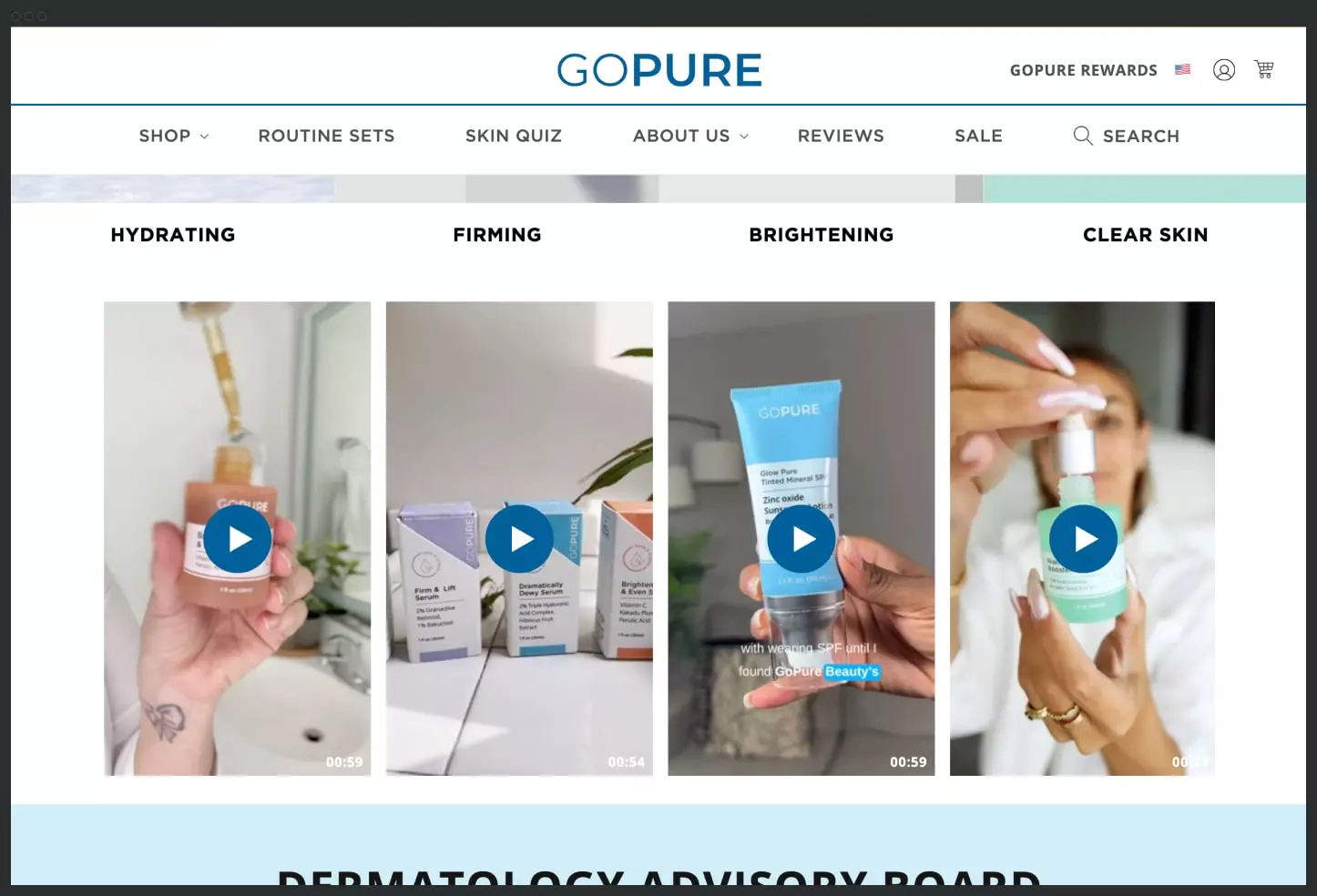
Now over to you. Below are #3 ways you can incorporate UGC into your ecommerce marketing:
- Add UGC videos and images to your product detail pages, and make them shoppable like goPure.
- Use UGC in paid ads and social media promotions to make your ads feel more human.
- Feature UGC across your socials to build credibility and make your brand more relatable to customers.
Stay top of mind throughout the year
Don’t focus all your marketing budget on the big seasons such as Black Friday, Christmas, and back-to-school.
If you want sustainable growth, you need to keep pulling people back into the buying zone throughout the year. And it’s not complicated to do.
You can release limited-edition packaging, themed bundles, or playful product variations tied to specific moments like Mother’s Day, International Pet Day, or World Chocolate Day.
In other words, remain as relevant as you can be and stay at the top of your mind throughout the seasons.
The brands that do really well have a cadence to their business. A promotional rhythm where they are creating relevance for their brand throughout the year for different occasions and observations.

Founder of Ecommerce Equation
For example, if you sell phone cases, release a special line for back-to-school, or offer personalized gifts ahead of Father’s Day.
However, don’t jump on every sale season. At the end of the day, you want to be intentional and sensitive with what you align your brand with.
Misaligned relevance will only damage your brand.
Borrow influencers’ influence
Influencers have built something most brands spend years trying to create.
Trust.
That trust can translate into revenue for ecommerce companies that tap into influencer marketing.
In fact, nearly 60% of social media users in the US have bought a product after seeing an influencer use it. Influencer marketing statistics also tell us that the ROI averages about $2 for every $1 spent on influencer partnerships.
You don’t have to go for the biggest names either.
Nanoinfluencers, creators with 10,000 followers or less, often deliver the highest engagement rates. They feel more relatable, their audiences are more responsive, and they tend to cost less to work with.
A good example of influencer marketing success is BK Beauty, an ecommerce cosmetics brand.
After Melissa Murdick, a makeup artist with 1.3 million followers, mentioned the brand’s BK Beauty 101 brush on TikTok Shop, the company saw a 30% sales boost. All from a simple mention!
However, that kind of success will be short-lived if you stop at one video.
If an influencer campaign is successful, don’t treat it as a one-off event. Instead, build a longer-term partnership with the influencer so you can keep riding the momentum and get continued access to that influencer’s audience.
Pay for traffic
Paid traffic is the fastest way to grow your ecommerce business because you can get your products in front of new audiences at scale.
Where should you run ads as an ecommerce business?
Start with Google Shopping ads and catalog ads on social media.
Both offer high visibility and are optimized for product discovery.
Based on our latest guide on Google Ads statistics, here’s what you can expect with Google Shopping campaigns:
- An average click-through rate (CTR) of 0.86%
- A cost per click (CPC) of around $0.66
- A conversion rate of roughly 1.91%
Shopping ads are great when you're looking to scale and need visibility across a broad audience on Google.
On the social side, catalog ads are equally effective, especially on platforms like Meta, TikTok, or Snapchat, depending on where your audience spends the most time.
These ads let you showcase multiple products dynamically and personalize content based on user behavior.
Unfortunately, creating catalog ads can be time-consuming and a bit complex when working with a large inventory.
That said, there are tons of creative automation tools you can use to create ads at scale. If you want an option that lets you generate catalog ads automatically and has a free plan for you to test, Cropink is the best choice.
Pro tip: The trick to running high-converting social media ads is to make them not look like ads
If your Facebook ad doesn't feel like it belongs in the feed, it's already dead. Native-style creative wins 9 out of 10 times. We stopped making ads that look like ads. Instead, we build them to mirror real posts: raw visuals, lowercase captions, etc. One of our top-performing campaigns looked like a customer filmed it on their phone, because they did. The trick? People don't skip what feels real. They stop, read, and engage.

CEO and Founder, NewswireJet
If you’re just getting started with catalog ads on social media, check out our guide to creating profitable Facebook catalog ads, which walks you through the process in detail.
See this other guide for more details on other ecommerce advertising channels you can try aside from Facebook.
Use retargeting to recover abandoned carts
In our guide on ecommerce statistics, we learned that shopping cart abandonment is estimated to be around 70%.
So, how do you bring those near-buyers back?
With retargeting.
For example, if someone visits your website and adds a product to their cart but doesn’t complete the purchase, you can reconnect with them through dynamic Facebook or Instagram ads.
It will feel like the potential customer is picking up right where they left off, and the second time around, especially if you’re using dynamic content, you’ll have a better chance at conversion.
In fact, retargeting ads can increase conversion rates by up to 150%.
Example of retargeting on social:
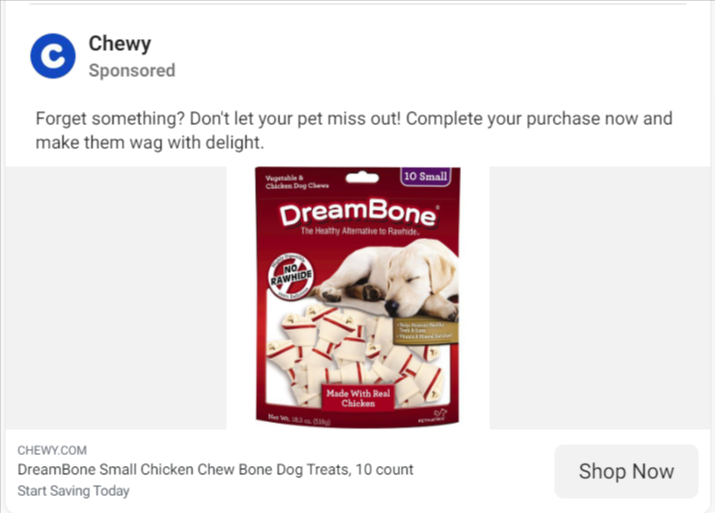
Aside from Meta platforms, Google Ads is another channel to retarget visitors. However, retargeting can work on almost any platform, including email.
See this example from ConvertCart for how brands are remarketing through email follow-ups.
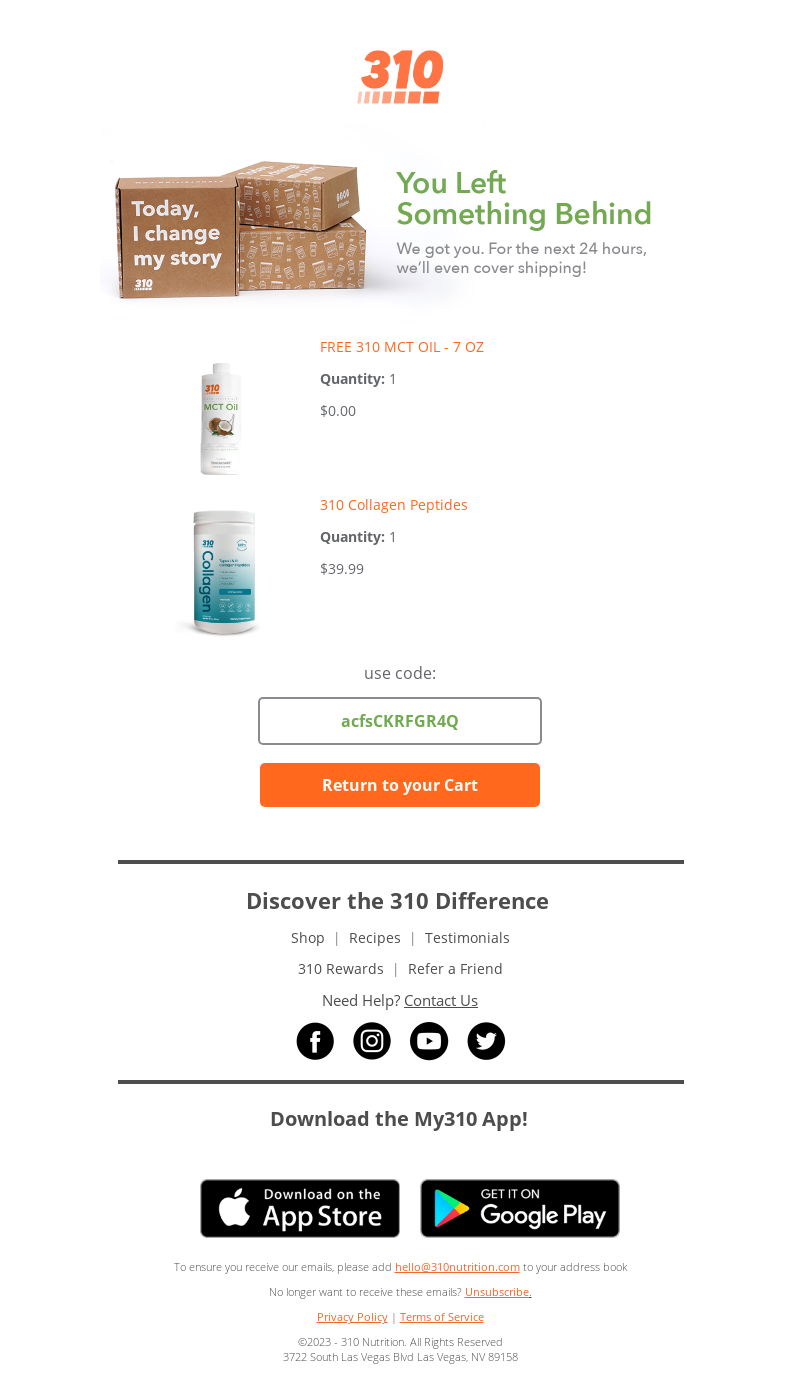
But don’t overdo it. People will not appreciate feeling like they’re being chased around the internet.
According to a Marketing Charts 2019 report:
- 53% of consumers are fine with one retargeting attempt per week
- 19% are okay with two
- Only 5% are comfortable with more than six
If you go beyond that, you risk annoying the very customers you’re trying to win back.
Optimize your ecommerce website for SEO
Even though it looks like AI is dominating search, SEO is still a super critical strategy to implement for your ecommerce site.
As of 2025, the average ecommerce brand ranks for around 1,800 keywords and earns roughly 9,600 organic visits per month from search.
According to Reboot Online, if that same amount of traffic were acquired through paid search, it would cost the brand an average of £11,790.58.
The most rewarding part about SEO is that you don’t have to chase trends to benefit from it.
All you need to do is make sure your content, product pages, images, and descriptions are optimized for the keywords your audience is already searching for.
It’s easier to find these top-performing keywords using tools like SEMrush or Ahrefs. You can also pull keyword ideas from Amazon search suggestions, but be sure to validate them with SEO tools so you get a data-backed view of their value.
On the technical side, make sure:
- Your site loads in under 3 seconds
- You review and implement schema markup
- All relevant pages are indexed by Google, Bing, and other major search engines
- Your site architecture is simple, scalable, and easy to navigate.
All these technical aspects are important because 90% of the lowest-performing ecommerce websites contained significant UX issues that hurt their search performance.
Finally, make sure you’re building backlinks because they help add more authority to your website, which in turn signals to search engines that they can trust you.
Win conversions with pop-ups and on-site notifications
Most people hate pop-ups, and for good reason.
However, before you dismiss this ecommerce marketing strategy entirely, consider this: the problem isn't popups themselves, but how most brands execute them.
Done right, pop-ups can be high-conversion tools that feel helpful rather than intrusive.
One brand that uses pop-ups right is Asphalte, a French fashion label that produces clothing on demand.
Because their model depends heavily on customer feedback and co-creation, they needed a way to turn casual browsers into active contributors.
Asphalte chose popups as the medium for this engagement, but instead of ignoring the fact that most people dislike them, they addressed that skepticism directly.
They made their popups conversational, honest, and aligned with their brand values.
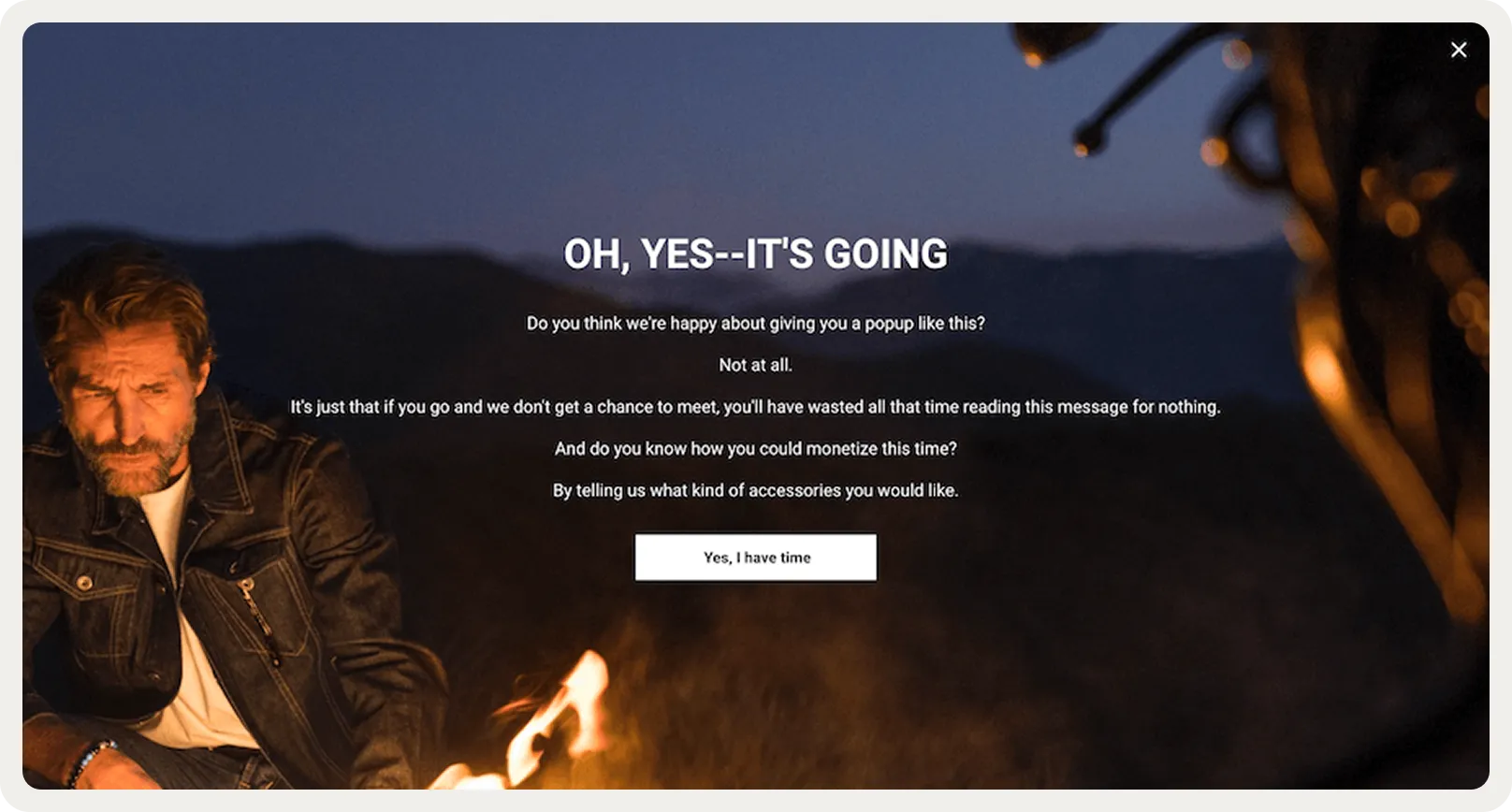
As Benjamin Mateo, Chief Revenue Officer (CRO) at Asphalte, explains.
Popups are like ads. People don't like them, so we made them fun. A really good popup doesn't feel like a popup at all.

Chief Revenue Officer (CRO) at Asphalte
It worked:
- 60,000+ popup views in January
- 4,000+ leads generated
- 11.5% of visitors who clicked notifications accounted for 42% of Asphalte’s revenue
If you choose to use popups or notifications as one of your ecommerce marketing strategies:
Frame your agenda honestly
If you’re offering early access or collecting opinions for a product launch, say so. A popup saying “We’re building something new. Want to help shape it?” feels much more human than “Subscribe now for updates.”
Match the tone to your brand.
If your brand is playful, be playful. If you're sleek and minimalist, don’t clutter the experience. Your popup should feel like a natural extension of your product page, instead of a spammy interruption.
Trigger popups based on behavior, not just time.
Rather than a popup that appears 5 seconds after someone lands, try showing it when a visitor scrolls 50% down the page, adds a product to cart, or lingers on a collection for more than 30 seconds. These are moments when interest is already there, you’re just offering the next step.
Get press coverage
If you have a good product, a unique story, or a clever angle, there’s a good chance a journalist or publication is already looking for something like it.
When they first launched, LARQ, the brand behind self-cleaning water bottles, relied on press coverage to increase its brand awareness.
Their product stood out because of its functionality and design, but what got them attention was how they packaged the story. It was innovative, relevant, and easy to pitch.
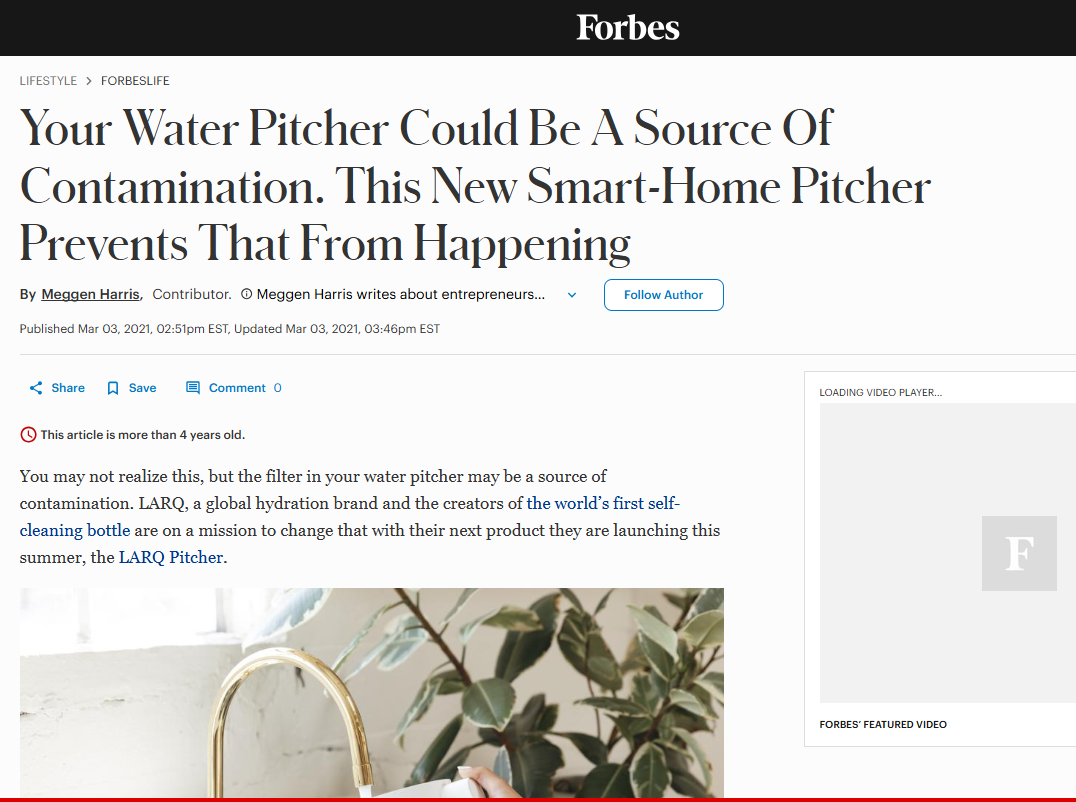
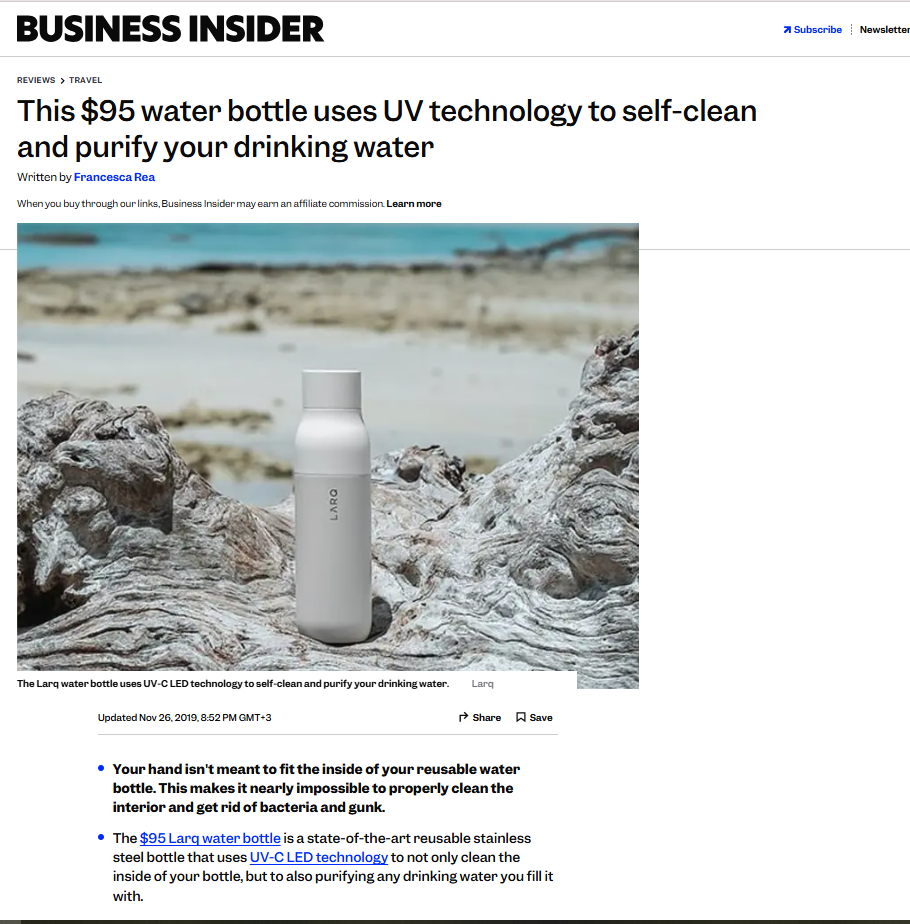
How can you achieve the same?
If you want to get press for your brand, identify what makes your product or story worth talking about. It could be:
- A unique or innovative product
- An interesting origin story
- A creative way you're solving a common problem
- A strong mission or cause tied to your business
When you have clarified your angle, connect with editors or writers at publications that target your potential audience.
There must be a huge overlap for the coverage to benefit you, since there’s no point in getting coverage in a major outlet if your ideal customers don’t read it.
If your product or story isn’t exactly groundbreaking, that’s okay too. It might still be a good fit for niche publications with more focused readers.
Set up a loyalty program
People trust recommendations from friends more than almost anything a brand can say.
According to our referral marketing statistics, peer recommendations are trusted up to 10x more than brand messaging.
If you want to ‘naturally’ market your ecommerce store and keep your customers coming back, a loyalty or referral program is one of the best ecommerce marketing strategies to invest in.
To make it work, you’ll need to think about what motivates your customers to refer others. According to research:
- 58% say cash rewards are the most compelling
- 46% prefer a free product
- 41% want a third-party gift card (Visa, Mastercard, etc.)
The exact structure of your program can be as simple or advanced as you like, as long as you offer something valuable in return.
Think beyond checkout
According to industry benchmarks, customer acquisition costs (CAC) can range anywhere from $21 in niches like Arts to as high as $377 in Electronics.
As such, retaining an existing customer is almost always more profitable than constantly chasing new ones.
A tried and tested method to increase customer lifetime value is to create a thoughtful and helpful post-purchase experience.
Here’s how you can do that:
- Offer support or education after purchase
Patch, a UK-based indoor plant store, is a great example. Their post-purchase experience involves providing customers with detailed care guides and courses so they know how to look after their plants.
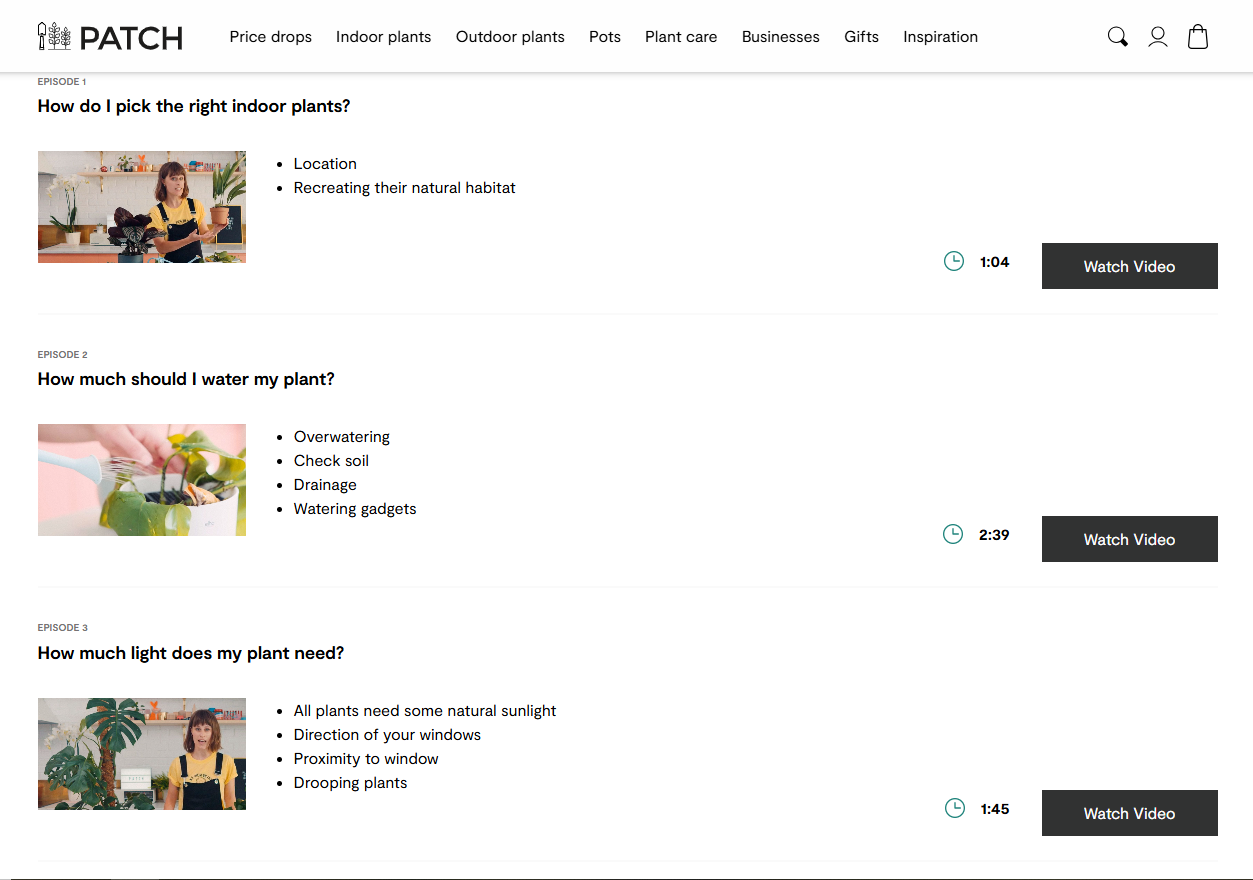
- Make unboxing memorable
You can take the route of brands like Ohh Deer and go the extra mile with fun, personalized unboxing experiences that make people want to share and shop from your brand again. - Invite customers to your loyalty program
Right after purchase is a perfect time to introduce your loyalty or referral program. Just make sure there’s a clear benefit for joining. - Simplify returns or exchanges
An easy, transparent returns process helps build confidence and reduces purchase hesitation in the future. - Be accessible for follow-up questions
It looks simple, but customers feeling supported is one of the most underrated ways to make them loyal shoppers for your brand.
Put people front and center
If customers can see themselves or their story in your product, you're already one step closer to converting them.
One way to do this is by having real people model or showcase your product in use. It makes your brand feel more relatable and human.
Another approach is to show behind the scenes of your team, your process, or even the day-to-day of running your ecommerce store.
Remember, you are selling to people who are chronically online more than any other time in history, and brands can start to blur into one thing if there's no differentiator, or in this case, personality.
Needle & Thread is a good example of putting people front and center. Their Instagram page feels personal and relatable. See how human the page looks:
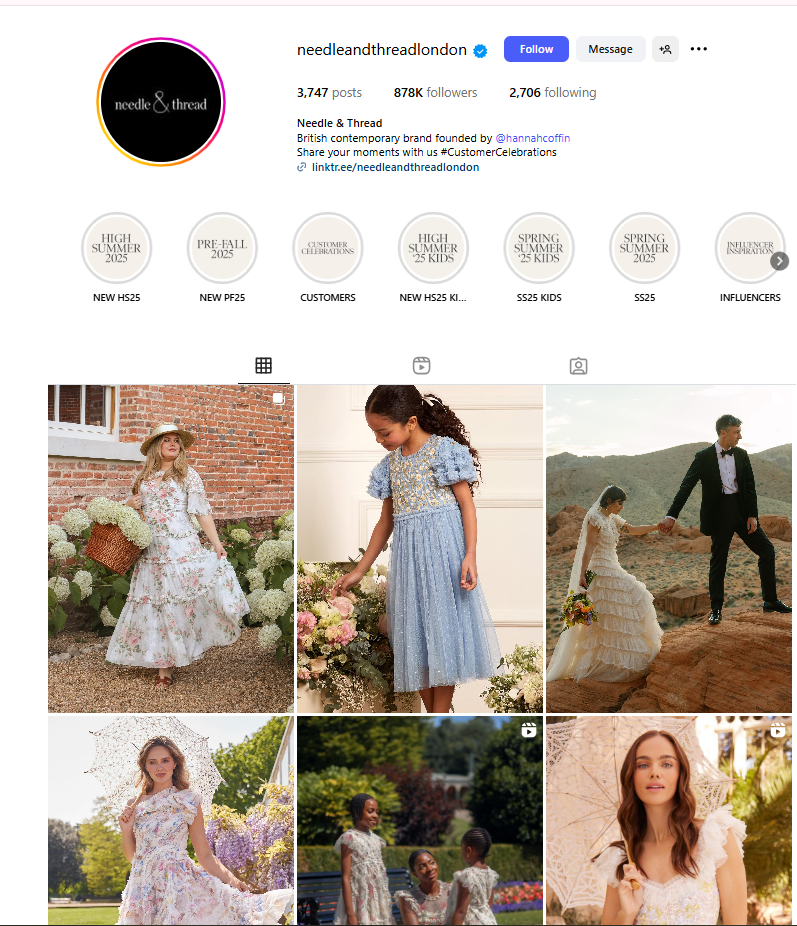
They also feature customers directly on their website, which no doubt helps future buyers imagine themselves in the product.
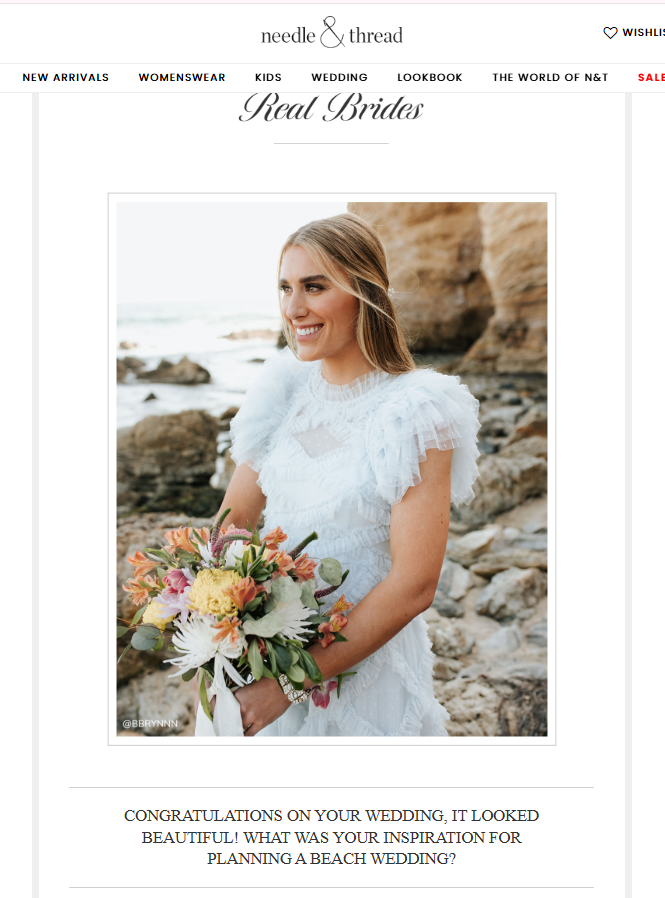
Do a giveaway, but make it worthwhile
Giveaways are one of the most tactical ecommerce marketing strategies, but in all honesty, many brands don’t do them well.
The biggest mistake we see is giving away something no one wants.
If you’re going to run a giveaway, make it worthwhile. The prize should be valuable and relevant to your audience, not a slow-moving product you’re hoping to clear from inventory.
If you’re looking for a good, but simple giveaway idea, here’s one:
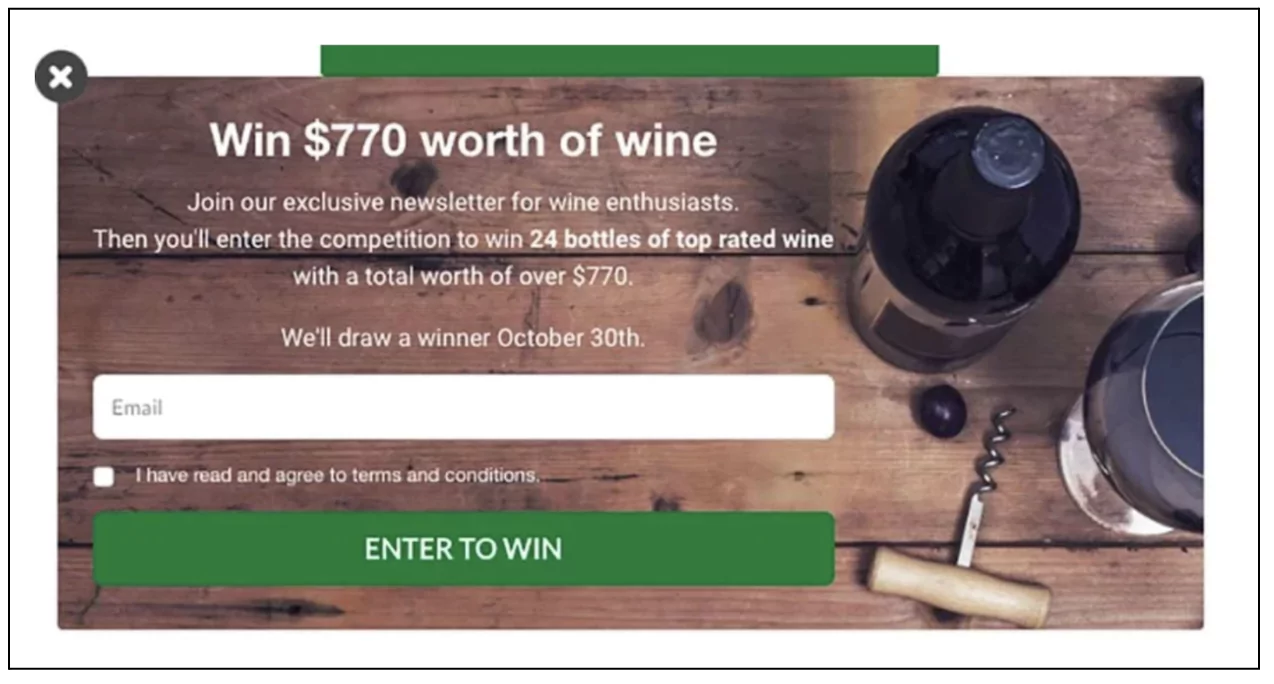
Why does it work?
- The offer is valuable. $770 worth of wine!
- The seller gets something valuable in return, email subscribers who are most likely wine enthusiasts
- A deadline, which means scarcity, and as we know, scarcity creates urgency
- The setup is simple and to the point
Here’s another example, this time, on Instagram, that sticks to these same principles. $500 in value is pretty irresistible to most people.
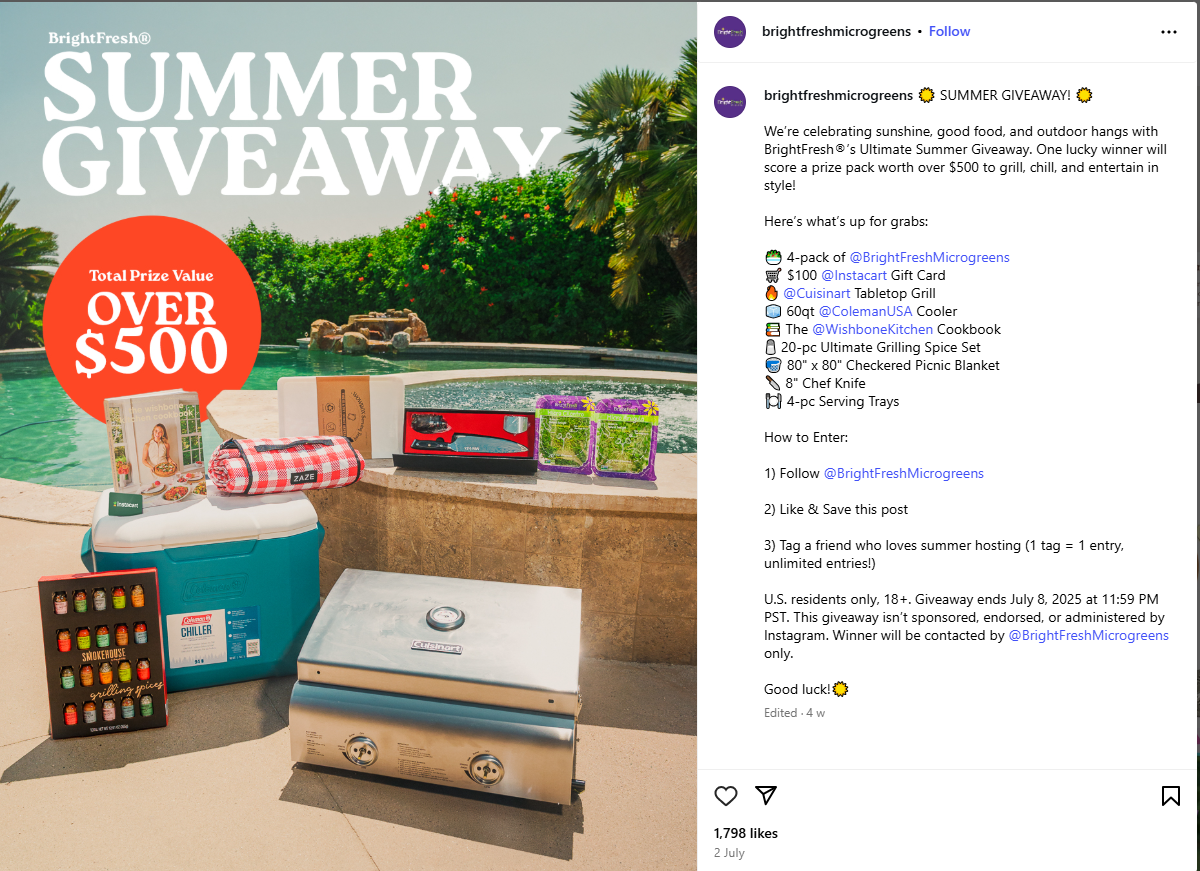
Final thoughts
There are 12 reliable and, if you look at the data we shared, quite effective ecommerce marketing strategies.
Each one has the potential to give excellent results, but they’re most impactful when paired with a good understanding of your audience.
When you can answer who your audience is and what they want, it will be easier to identify the 2 to 5 strategies that make the most sense for your brand.
One strategy you shouldn't leave behind if you're thinking about scalability and long-term growth is advertising. Paid campaigns, as we established, are the fastest way to get more traffic and conversions.
Check out Cropink to learn how we can help you scale your ecommerce brand with more efficient, automated ads.
FAQs
Start with organic strategies like SEO, user-generated content, and organic social media. These take time but are more affordable to implement and can build long-term traction.
Paid ads and influencer marketing can show results within days to weeks, while SEO and content marketing typically take 3-6 months to gain meaningful results.
Use your website analytics and customer surveys to understand how people currently find you, then amplify those successful channels first.
Sources
- Videowise. How goPure reached up to 26% video conversion rates with UGC videos
- Agency Podcast. Scaling Your Business with Digital Marketing and E-Commerce
- Modern Retail. ‘Not mind blowing’: Brands that have started testing out TikTok Shop say it’s a slow burn
- Convertcart. Brilliant eCommerce Retargeting (and Remarketing) Examples
- Thrive. 6 Retargeting Strategies To Boost Your eCommerce Sales
- Reboot Online. eCommerce SEO Statistics
- Wisepops. The onsite marketing strategy that brings Asphalte 4,000+ leads every month
- Shopify. Customer Acquisition Costs by Industry

Damaris is a Digital Marketing Specialist who writes about digital marketing and performance marketing. At Cropink, she creates data-driven content to help businesses run better ad campaigns for better performance and ROI.

Leszek is the Digital Growth Manager at Feedink & Cropink, specializing in organic growth for eCommerce and SaaS companies. His background includes roles at Poland's largest accommodation portal and FT1000 companies, with his work featured in Forbes, Inc., Business Insider, Fast Company, Entrepreneur, BBC, and TechRepublic.
Related Articles
Facebook can become a full-on storefront if you know how to set it up right. This guide walks you through the necessary steps to create a Facebook Shop, get approved, and tweak it so shoppers trust you enough to hit buy.

Shopify Collective helps U.S. and Canadian retailers earn 20–40% profit without holding inventory. As ecommerce drives over a third of B2B revenue and global sales near $32.8T by 2026, learn how to scale your catalog and boost growth inside Shopify’s trusted ecosystem.

How does Shopify work? In 2026, it powers 2.5M+ live stores and supports global sellers with tools for building, managing, and growing an online business. This guide shows how Shopify works, from setup to checkout, with stats, tips, and zero coding required.

We've compiled the most effective eCommerce marketing tools that successful online stores use to automate their campaigns and boost conversions. Each tool is evaluated for ease of use, pricing, and integration capabilities with popular platforms like Shopify.

Looking for Shopify store inspiration? Explore 30+ of the best Shopify stores in 2026—from fashion and beauty to tech and home. See what makes them stand out.

Shopify powers 4.8M+ stores in 2025—but what’s the real cost? From $5 starter plans to $399 advanced options (plus hidden fees), this no-fluff guide breaks down everything you need to know before you launch.

Struggling to get traffic on Shopify? You’re not alone—over 2.1M merchants are fighting for attention. Discover the 2025 ad strategies top sellers use to turn clicks into customers without burning cash.

Getting people to find your Shopify store is one thing. Getting them to buy is a whole other game. These 10 strategies help you build trust, attract the right customers, and turn traffic into sales without gimmicks.

Social commerce is reshaping how we shop—set to become a $1 trillion market by 2028. Discover which platforms are leading the charge and how tools like Cropink can help you sell directly inside social apps.

Most successful Shopify stores have one thing in common: they run ads. When it comes to advertising on Shopify, you have two main options: Shopify's native Shop campaigns or running Meta ads through your own accounts. This article breaks down when to use each method and exactly how to get started with whichever option fits your needs.

eCommerce fraud is surging—global losses hit $44.3B in 2024 and could soar to $107B by 2029. Discover the latest fraud stats, rising threats like AI scams, and how to protect your online business in 2025.

Shopify powers over 2.5M live stores in 2025—but that's after a massive 45.7% drop from last year. This data-packed breakdown reveals where the market is shrinking, who's growing (hello India and France), and why most of Shopify's 7.2M stores don’t survive.

How Can Cropink Help?
Start with Cropink is easy and free
No credit card required